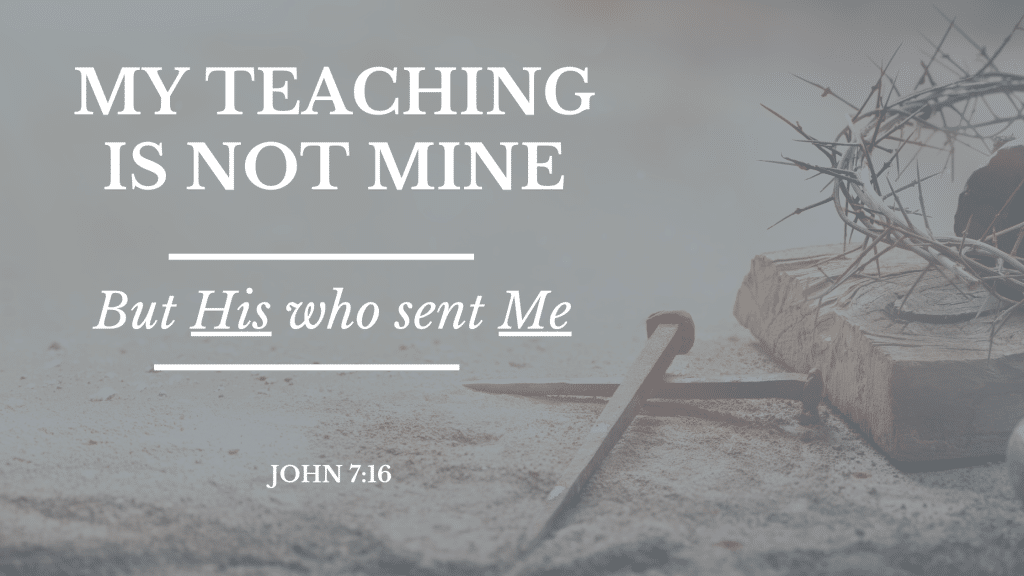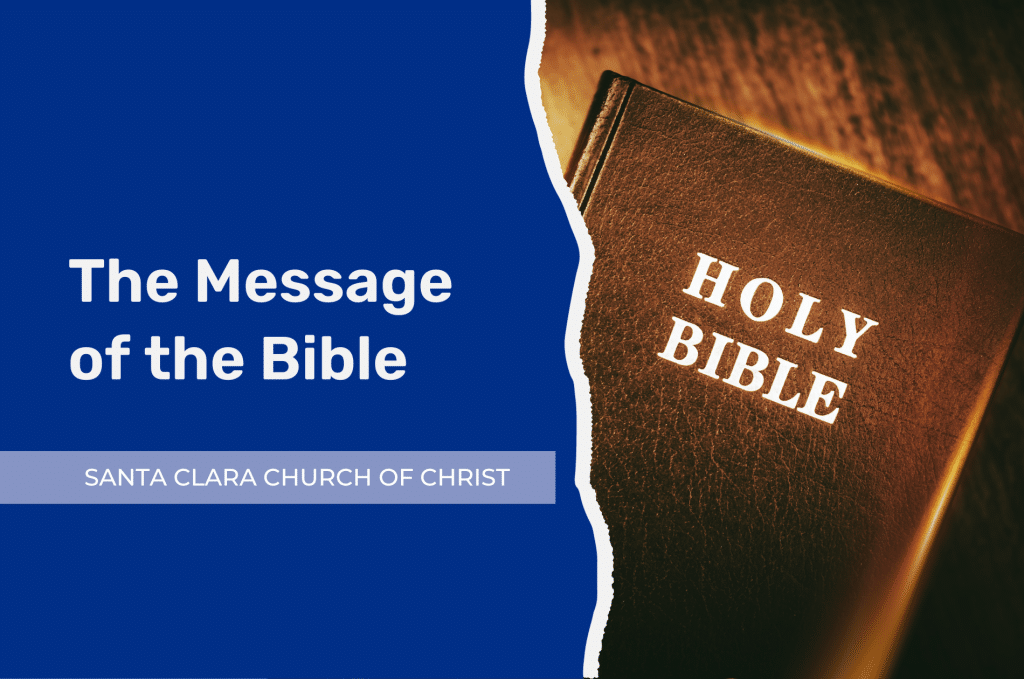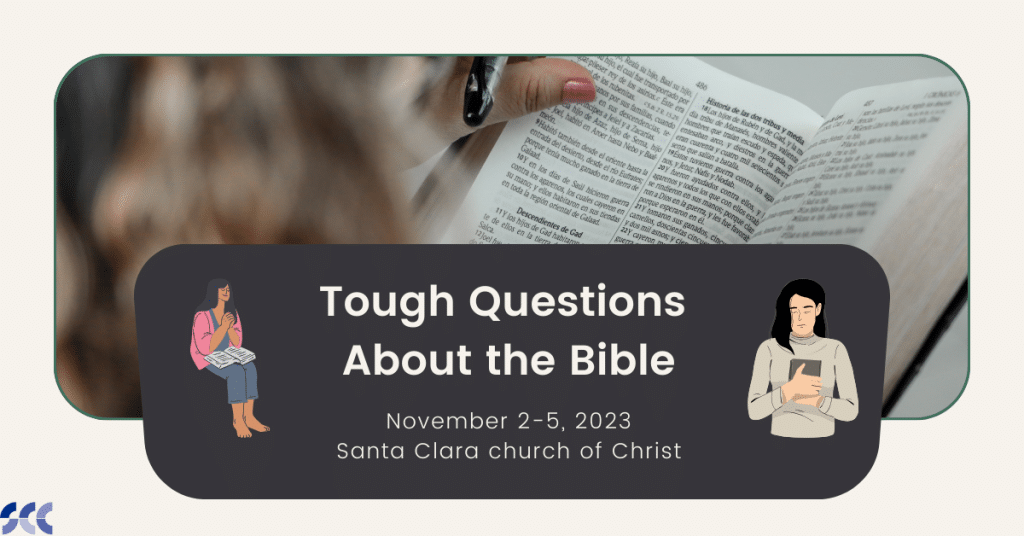The Bible claims to be a message from God to mankind.
The first book in the Bible, Genesis, begins with the words, “In the beginning God…”
The prophets regularly open their discourses with the formula, “Thus says the LORD…”
Jesus claimed, “My teaching is not mine, but his who sent me. If anyone’s will is to do God’s will, he will know whether the teaching is from God or whether I am speaking on my own authority” (Jn. 7:16-17).

The apostle Paul declared, “And we also thank God constantly for this, that when you received the word of God, which you heard from us, you accepted it not as the word of men but as what it really is, the word of God, which is at work in you believers” (1 Thess. 2:13).
The implicit authority of the Bible is tied to its claim of supernatural origin.
The Process of Communication
According to the Scriptures, God revealed his message to certain chosen individuals during carefully timed moments of Biblical history. Hebrews 1:1-2 says, “Long ago, at many times and in many ways, God spoke to our fathers by the prophets, but in these last days he has spoken to us by his Son…”
How did God convey his will “at many times and in many ways”? The message was communicated in bits and pieces, not in its entirety. Through dreams, visions, theophanies, angels, and other means, “God spoke by the mouth of his holy prophets long ago” (Acts 3:21).
This resulted in a variety of channels of communication.
Among other forms of transmission, the Bible’s human messengers utilize law codes, historical reports, sermons, prophetic oracles, songs, play acting, epistles, poems, proverbs, parables, legal briefs, debates, captivating stories, outbursts of praise, curse formulas, covenants, royal decrees, genealogical records, funeral dirges, wild apocalyptic images, and heartfelt prayers.
God is determined to get our attention, one way or another.
The Effect of Cumulative Revelation
The Bible was revealed in stages. It is a book that required at least 40 commissioned human writers, on three continents, over 1500 years to complete.
There are two major sections, called the Old Testament, written mostly in Hebrew, and the New Testament (or Covenant), written in Greek. As the Bible is a multi-volume work, there are 39 “books” in the Old Testament, and 27 in the New Covenant. These books span three great dispensations of time: the Patriarchal age, the Mosaic period, and the New Testament Church.
Part of the reason for cumulative revelation over time had to do with preparing the world incrementally to receive the full message. The story of the Bible is that of a hands-on God intervening through history to save a lost world.
Prophecies, sometimes made hundreds of years in advance, anticipate later developments. The entire Old Testament is best seen as a preparation for the New Testament. “But when the fullness of time had come, God sent forth his Son, born of woman, born under the law…” (Gal. 4:4).
The Bible is Complete
God intended the Bible to be the final authority, or the go-to Source, for “all things that pertain to life and godliness” (2 Pet. 1:3). One of the foundational statements in Scripture on the matter is this one from the apostle Paul: “All Scripture is breathed out by God and profitable for teaching, for reproof, for correction, and for training in righteousness, that the man of God may be complete, equipped for every good work” (2 Tim. 3:16-17).

We must believe that at the outset of the process is a God who took initiative to reveal his Word, and to safeguard the process that would ultimately make it accessible to people far and wide. 2 Peter 1:20-21 says, “Knowing this first of all, that no prophecy of Scripture comes from someone’s own interpretation. For no prophecy was ever produced by the will of man, but men spoke from God as they were carried along by the Holy Spirit.”
What was true of the Old Testament prophets is also true of the New Testament. There is ultimately a carefully delegated chain of command at work.
- God the Father speaks through his Son, Jesus Christ (Jn. 12:48-50; Mt. 17:5).
- Jesus in turn sends the Holy Spirit (Jn. 14:26; 15:26; 16:12-13).
- The Holy Spirit would reveal the New Covenant through “holy apostles and prophets” (Eph. 3:3-5).
- The apostles and prophets taught the revealed message by “spoken word” or written “letter” (2 Thess. 2:15).
- The resultant message is called the “command of the Lord” (1 Cor. 14:37); “the word of God” (1 Thess. 2:13); and “the faith once for all delivered to the saints” (Jude 3).
As one can see from reading each of the passages above, no deviations were allowed at any stage of the process.
Evidence for Divine Revelation
The acceptance of the divine origin of the Bible’s message is not taken for granted. The work of prophets and apostles was “confirmed” to contemporary people of God by predictive prophecies, miraculous signs, and eyewitness testimony.
God wanted to demonstrate through objective, verifiable means the legitimacy of his chosen messengers, so that people could have confidence in the message (Jn. 20:30-31; 2 Pet. 1:16-22; Heb. 2:3-4).
As the message was being revealed, whenever there was a direct conflict between the true messengers of God and false spokesmen, powerful and amazing demonstrations vindicated those who spoke the truth over the counterfeit practitioners (Gen. 41; Exod. 7:8-12; 8:19; 1 Kings 18; Jer. 28; Dan. 2; Acts 13:6- 12). Fake revelations were thereby exposed for what they really were.



